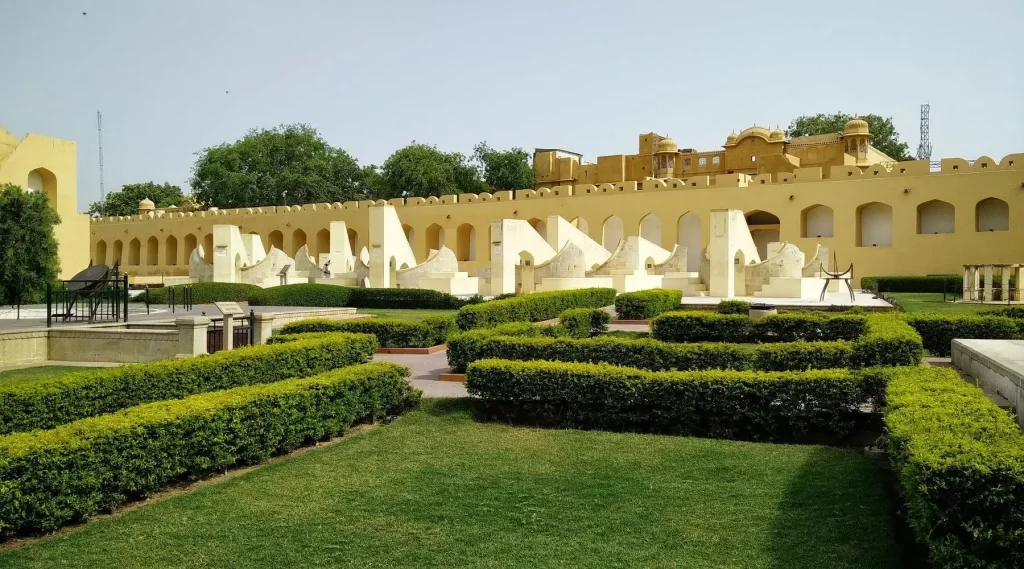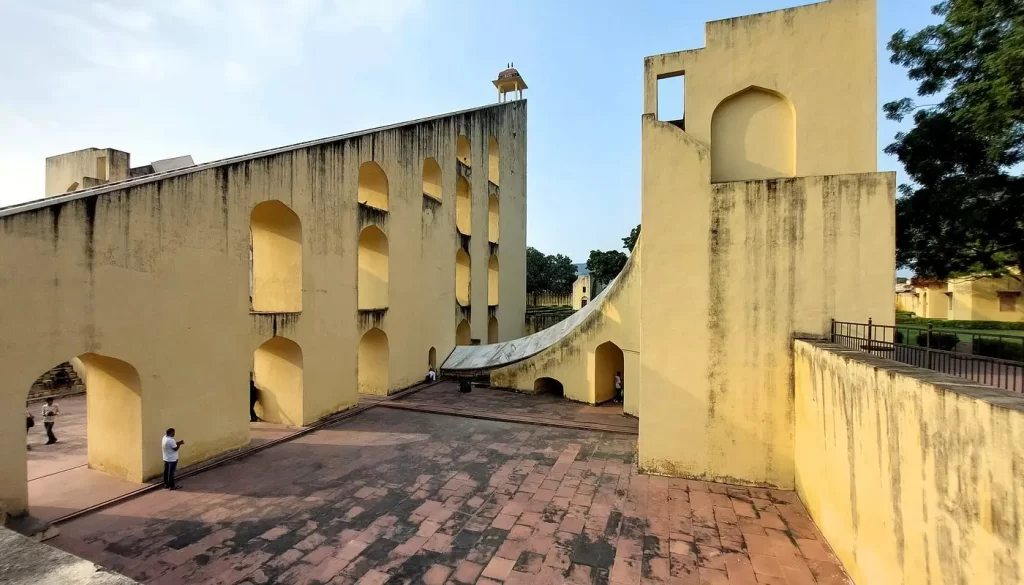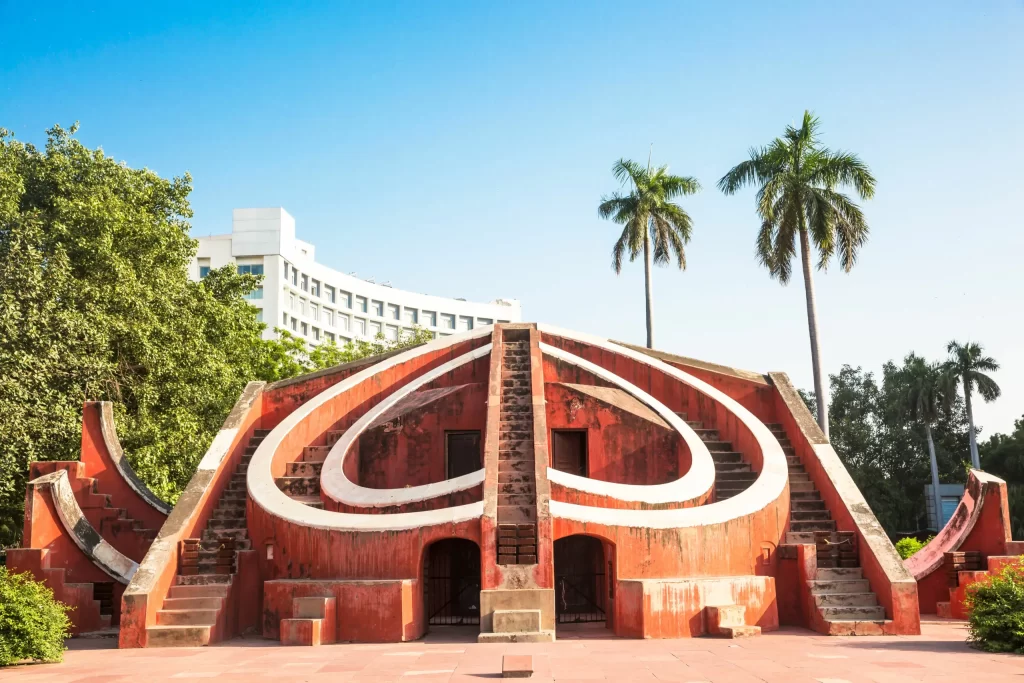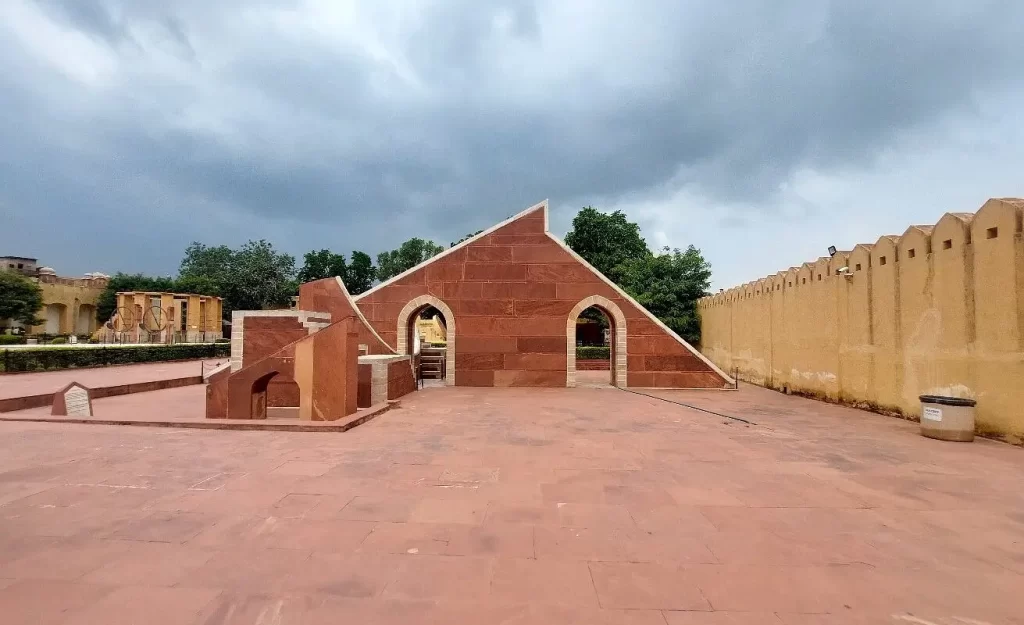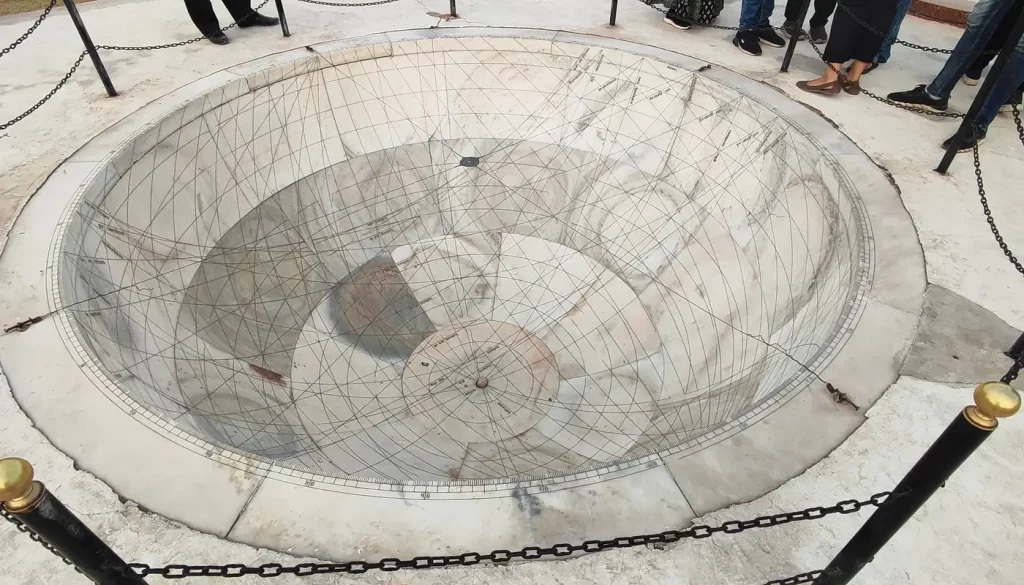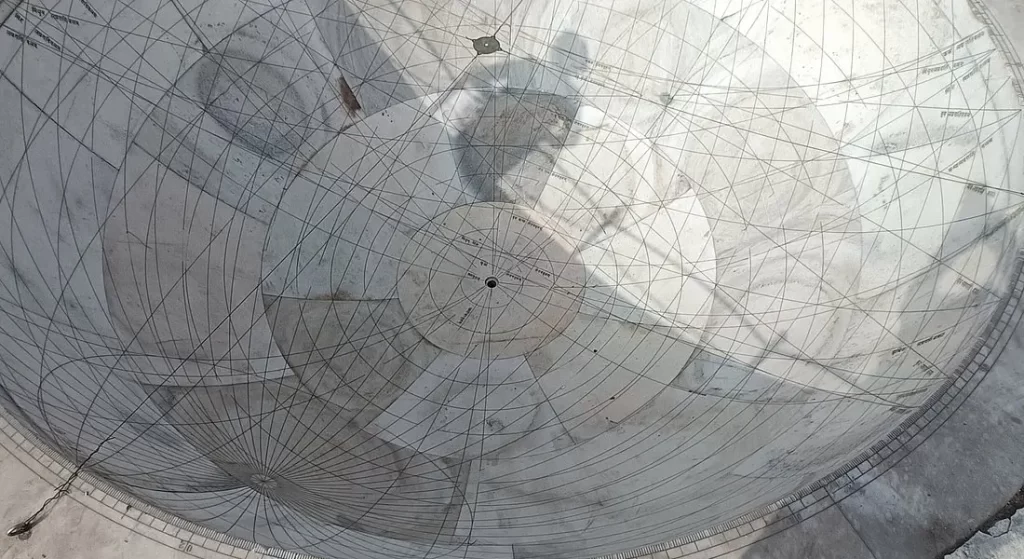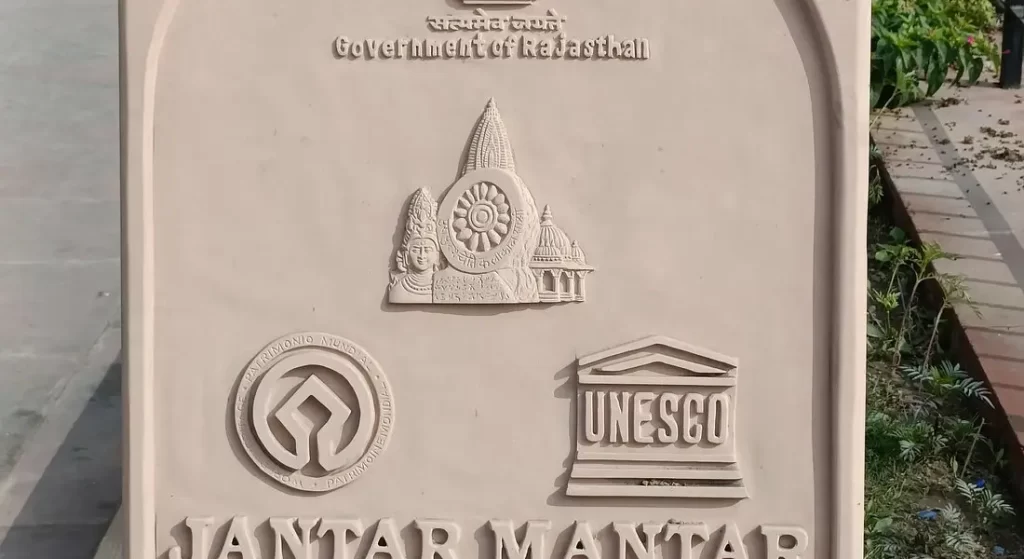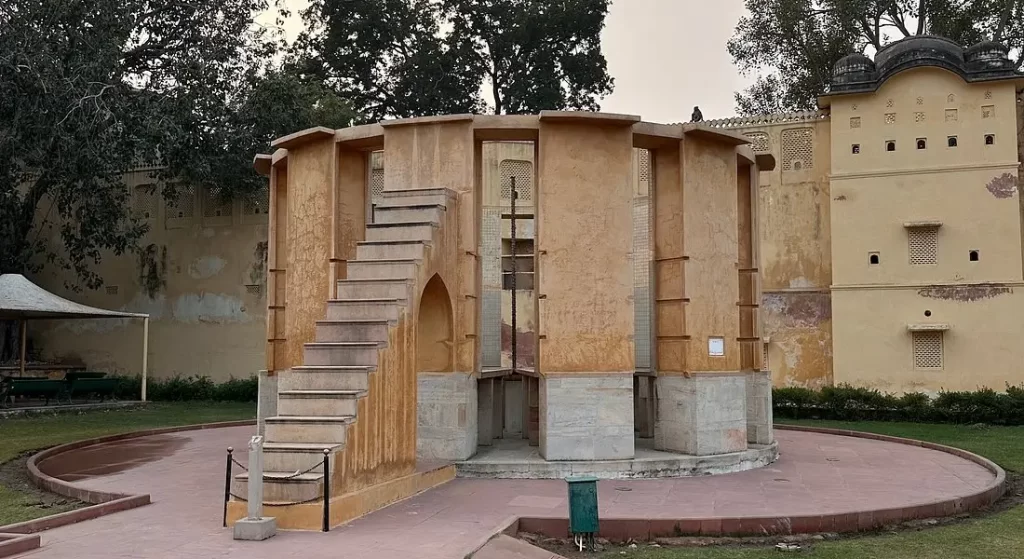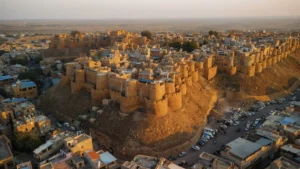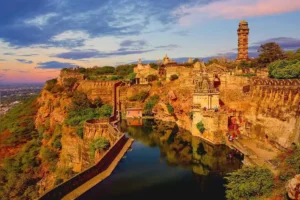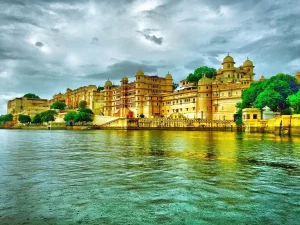The Jantar Mantar in Jaipur is an incredible testament to India’s scientific and architectural advancements in the 18th century. Built by Maharaja Sawai Jai Singh II, this observatory is a brilliant fusion of art, astronomy, and spirituality. It not only showcases India’s mastery over celestial science but also stands as one of Jaipur’s most iconic tourist attractions.
History of Jantar Mantar Jaipur
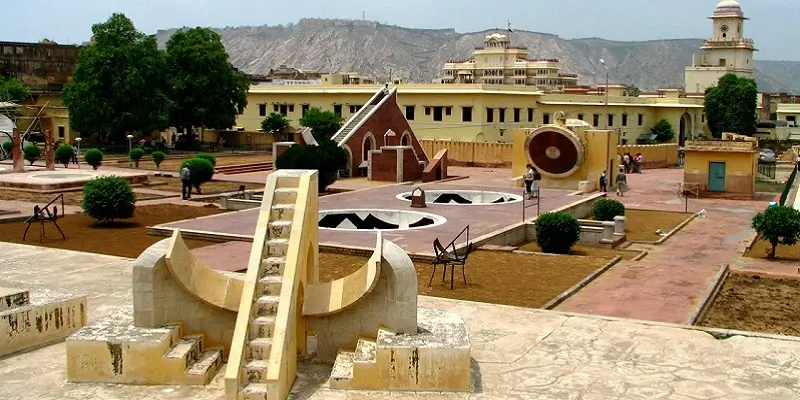
The Jantar Mantar in Jaipur was constructed in 1734 by Maharaja Sawai Jai Singh II, a visionary ruler and a renowned scholar in astronomy. Jai Singh II built five such observatories across India, with the one in Jaipur being the largest and most well-preserved. The name “Jantar Mantar” derives from the Sanskrit words ‘Yantra’ (instrument) and ‘Mantra’ (formula), symbolizing the use of instruments for astronomical calculations.
The Maharaja’s primary aim was to gather accurate astronomical data for various purposes, including timekeeping, calendar creation, and determining celestial positions. He drew inspiration from Islamic, European, and Hindu astronomy, reflecting his global perspective and curiosity.
What are the Interesting Facts About Jantar Mantar?
- Largest Sundial: The Jantar Mantar houses the Samrat Yantra, the largest sundial in the world, with an accuracy of up to two seconds.
- UNESCO Recognition: It was declared a UNESCO World Heritage Site in 2010, owing to its historical and scientific importance.
- Advanced Instruments: It features 19 astronomical instruments, each designed for a specific purpose, like tracking stars, predicting eclipses, and determining celestial altitudes.
- Multicultural Influence: Jai Singh II used Persian, Greek, and Hindu astronomy while designing the observatory.
- Interactive Science: The instruments are not merely displays but functional tools that can still perform accurate calculations.
What is the Secret of Jantar Mantar?
The secret of Jantar Mantar lies in its architectural precision and scientific innovation. The instruments were meticulously designed and positioned to achieve unparalleled accuracy in astronomical measurements without modern equipment. For instance, the Samrat Yantra, a massive triangular sundial, aligns perfectly with the Earth’s axial tilt, allowing it to determine time with incredible precision. The observatory’s instruments were built using locally available materials such as stone and marble, showcasing the ingenuity of 18th-century Indian engineers.
Image Gallery of Jantar Mantar Jaipur, India
The Jantar Mantar is a visual treat, featuring colossal instruments against the backdrop of Jaipur’s vibrant skies. From the majestic Samrat Yantra to the hemispherical Jai Prakash Yantra, each structure is a masterpiece. Visitors often capture the intricate carvings, geometric patterns, and the interplay of light and shadow that bring the instruments to life.
Architecture of Jantar Mantar
The architecture of Jantar Mantar reflects the confluence of art, science, and religion. The observatory comprises 19 geometric instruments, each designed with specific functions:
- Samrat Yantra: The world’s largest sundial, standing 27 meters high.
- Jai Prakash Yantra: Two hemispherical bowls that map the sky, allowing observers to locate celestial bodies.
- Rama Yantra: Cylindrical structures used to measure altitudes and azimuths.
- Misra Yantra: A unique instrument that determines the longest and shortest days of the year.
- Chakra Yantra: Used to measure the coordinates of celestial bodies.
The observatory’s layout ensures that the instruments remain unaffected by external disturbances, such as vibrations or temperature changes, enabling precise measurements.
Cultural Significance
Jantar Mantar holds immense cultural and historical significance, symbolizing India’s rich scientific heritage. It serves as a bridge between ancient and modern astronomy, showcasing the advanced understanding of celestial mechanics during the 18th century. Today, it stands as a center of learning, attracting students, historians, and tourists from around the world.
Construction and Origin
The construction of Jantar Mantar began in 1728 and was completed in 1734. Sawai Jai Singh II employed skilled architects and artisans, blending scientific knowledge with artistic expression. Inspired by Ulugh Beg’s observatory in Samarkand, Jai Singh II designed the instruments to be larger and more accurate. The observatory’s strategic location in Jaipur, the newly founded capital, further emphasized its importance as a hub of science and culture.
Jantar Mantar Jaipur Entry Fee
- Indian Nationals: ₹50 per person
- Foreign Nationals: ₹200 per person
- Students (with valid ID): ₹15 for Indian students, ₹100 for foreign students
- Composite Ticket (includes Amber Fort, Hawa Mahal, and others): ₹300
FAQ’s on Jantar Mantar Jaipur
Q1: What is the entry price for Jantar Mantar in Jaipur?
The entry fee is ₹50 for Indian nationals and ₹200 for foreign nationals. Discounts are available for students with valid IDs.
Q2: What is inside Jantar Mantar?
Jantar Mantar houses 19 astronomical instruments, including the world’s largest sundial, tools to predict eclipses, and instruments to measure celestial altitudes and azimuths.
Q3: How many cities have Jantar Mantar?
There are five Jantar Mantars in India, located in Jaipur, Delhi, Ujjain, Varanasi, and Mathura. The Jaipur observatory is the largest and most well-preserved.
Q4: What is the best time to visit Jantar Mantar in Jaipur?
The best time to visit is during the winter months (October to March), when the weather is pleasant for outdoor exploration. Morning and late afternoon are ideal for avoiding crowds.
Q5: Who built Jantar Mantar in Jaipur?
The Jantar Mantar in Jaipur was built by Maharaja Sawai Jai Singh II in 1734 as part of his efforts to advance astronomy and timekeeping.
Conclusion
The Jantar Mantar in Jaipur stands as a timeless symbol of India’s scientific and cultural brilliance. Its impressive scale, intricate design, and historical significance make it a must-visit destination for anyone exploring Jaipur. Whether you’re a science enthusiast, a history buff, or simply a curious traveler, the Jantar Mantar offers an unforgettable journey through the wonders of astronomy and architecture.
Plan your visit to this celestial marvel and witness the ingenuity of India’s rich heritage!

